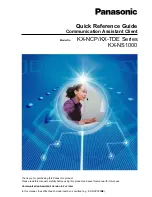
R&S NRP-Z28/-Z98
Connecting the sensor
1170.8966.12
1.11
E-6
Unlatch the
R&S Instrument
connector on the rear panel by
pressing down the unlatching ring of the built-in
plug and pulling off the cable jack at the same
time (Fig. 1-8).
Fig. 1-8
Unlatching the
R&S Instrument
connector
Test Setup
Fig. 1-9 shows a typical test setup:
1
R&S NRP-Z5 sensor hub
2
External power supply unit (supplied)
3
Power cable (supplied)
4
AC power supply
5
USB cable (supplied)
6
PC with USB host port
7, 8
BNC cable (optional, not supplied)
9
Trigger source (optional)
10
Triggered device (optional)
11-14
R&S NRP-Zxx power sensors (one to four sensors)
15
Signal source
16
DUT
The sequence in which the cables are connected is not important.
As already mentioned in section
, the R&S NRP-Z4 passive interface adapter can also
be used as an alternative to a standard USB cable for connecting to the PC. This adapter is connected
to the
R&S Instrument
port. Simultaneous operation at two USB hosts is not possible as the USB host
connected to the
R&S Instrument
port always has priority.
It is possible to cascade several R&S NRP-Z5 sensor hubs by connecting the
R&S Instrument
port of
an R&S NRP-Z5 to one of the sensor ports of another R&S NRP-Z5. However, external triggering and
the use of the
Trigger Master
function are then not possible. Instead, it is recommended to connect all
R&S NRP-Z5 hubs individually to the USB host or to an interposed USB hub, and to feed the external
trigger signal to all R&S NRP-Z5 hubs via their trigger inputs; or to forward the external trigger signal
from the trigger output of the R&S NRP-Z5 to which the
Trigger Master
is connected to the trigger
inputs of the other R&S NRP-Z5 hubs.
















































